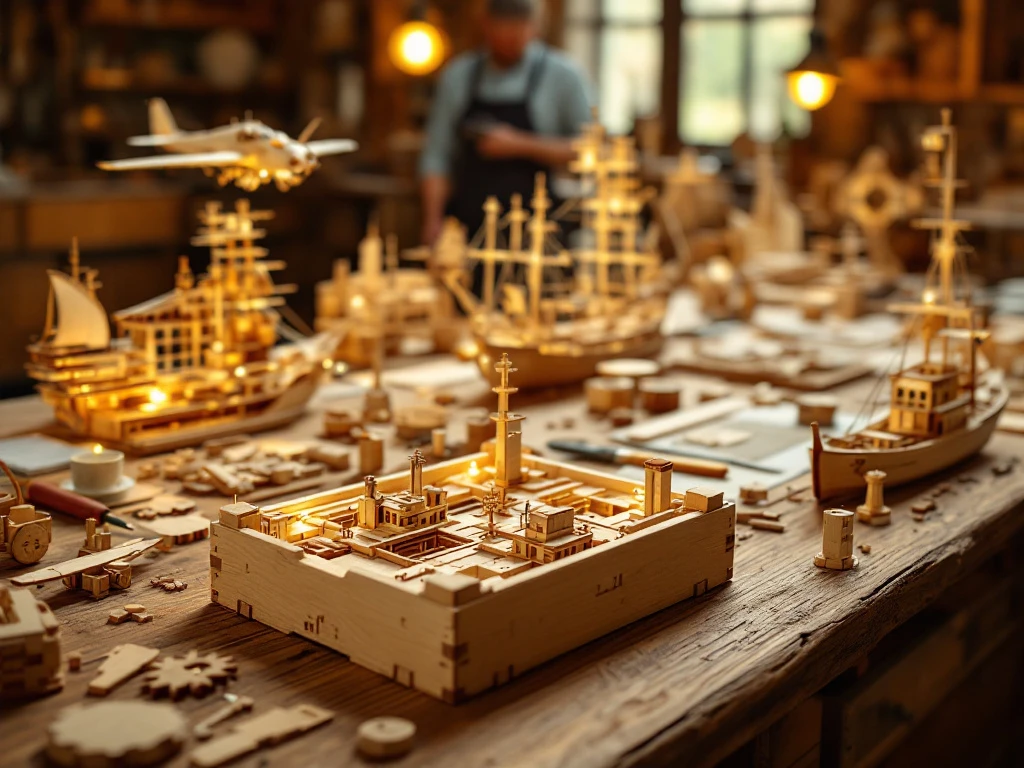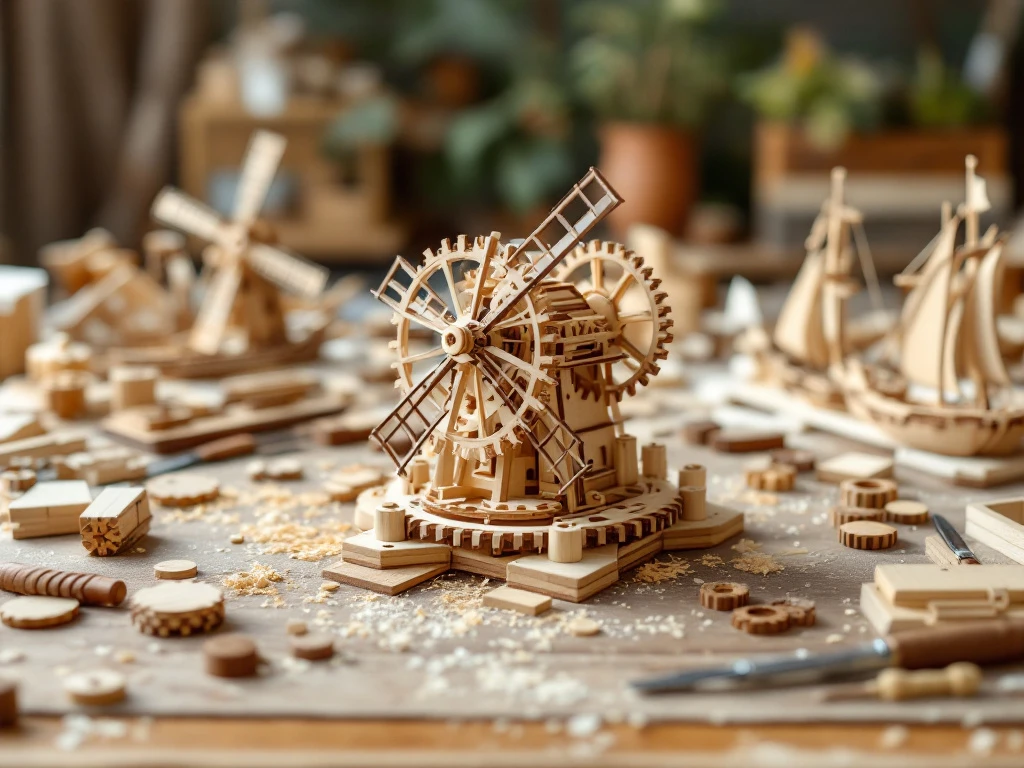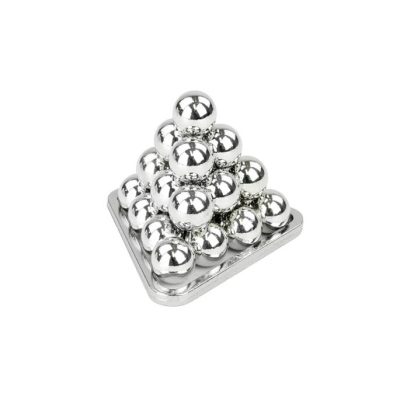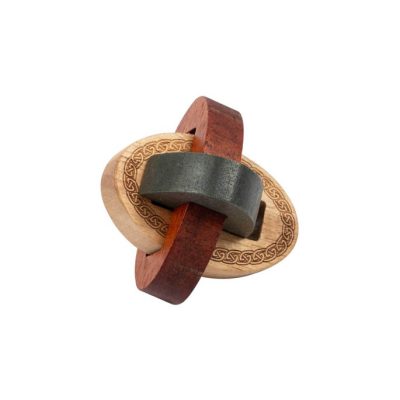-
 Dave Vinke
Dave Vinke
- Leestijd: 5 min
- Laatst geüpdatet: 29/08/2025
Model building teaches children important technical skills through hands-on experience with materials, tools and construction principles. Children develop spatial awareness, fine motor skills and logical thinking while solving problems and following instructions. The physical nature of model building offers unique advantages over digital activities for technical development.
What technical skills do children develop through model building?
Model building helps children develop spatial awareness, fine motor skills, logical thinking and understanding of mechanics. They learn how components fit together, what sequence is needed for assembly, and how different mechanisms function. These skills form a solid foundation for technical understanding.
Spatial awareness develops as children must visualise three-dimensional objects before building them. They learn to view components from different angles and understand how flat drawings translate into actual constructions. This helps later with subjects like engineering, mathematics and physics.
Fine motor skills improve through handling small components, using tools and making precise movements. Children train their hand-eye coordination and develop a feel for materials and textures. These skills are useful for many technical activities.
Logical thinking develops because model building requires a systematic approach. Children learn to work step by step, understand cause-and-effect relationships and plan ahead. They discover that sequence matters and that mistakes have consequences for the final result.
How does model building help children solve problems?
Model building stimulates problem-solving abilities through challenges during construction, interpreting instructions and correcting mistakes. Children learn to think of creative solutions when parts don’t fit or instructions are unclear. These experiences build confidence in their own abilities.
During building, children encounter situations where they must improvise. Perhaps a part is missing, something doesn’t fit properly, or they don’t understand a step. They then learn to seek alternatives, try different approaches and persist until they find a solution.
Reading and interpreting building manuals develops analytical skills. Children learn to recognise symbols, understand diagrams and convert abstract information into concrete actions. This helps develop technical literacy.
Making and correcting mistakes is a valuable learning process. Children discover that mistakes are normal and often lead to better understanding. They learn patience, perseverance and the value of careful work. This attitude helps with all technical activities.
At what age can children best start with model building?
Children can start with simple model building projects from age 4-5, but the best age depends on individual development and interest. Different age groups have different needs and capabilities regarding complexity and guidance.
For preschoolers (4-6 years), large, simple building sets are suitable with few parts and clear colours. They need lots of guidance and work best with click or magnetic connections. The focus is on fun and basic motor skills.
Primary school children (7-10 years) can handle more complex projects with more parts and simple tools. They can follow instructions better and need less direct guidance. This is an ideal age to spark technical interest.
Older children (11+ years) are ready for advanced model building with small parts, precision work and complex mechanisms. They can work independently and enjoy challenging projects that require multiple sessions. They also appreciate the technical aspects and functionality.
Why is model building better than digital play for technical development?
Model building offers tangible experience and three-dimensional thinking that digital activities cannot match. Children work with real materials, experience physical properties and develop understanding of mechanics through direct interaction. This physical experience strengthens technical learning.
Working with your hands activates different parts of the brain than digital activities. Children experience material resistance, component weight and the precision needed for proper fit. This sensory experience deepens understanding of technical principles.
With model building, children see the direct consequences of their actions. If something isn’t assembled properly, it falls apart or doesn’t work. This immediate feedback helps understand cause-and-effect relationships and the importance of precision.
Digital activities can spark technical interest but miss the physical component that’s important for complete understanding. Model building combines mental challenge with physical skills and gives children confidence in their ability to make and repair real things.
Where do you find the best model building sets for technical development?
The best educational model building sets combine quality, challenge and educational content. Look for durable materials, clear instructions and projects that match your child’s age and interests. Good sets grow with the development of technical skills.
Choose sets that appeal to different skills: mechanical movement, construction principles and problem-solving. Sets with gears, levers and other mechanical elements teach children how machines work. Building sets that allow different solutions stimulate creativity.
Pay attention to the quality of materials and components. Good model building sets have precisely fitting parts, durable connections and clear, well-illustrated manuals. Investing in quality ensures better experience and longer lifespan.
With us you’ll find an extensive range of model building sets specially selected for educational value and technical development. We offer different complexity levels for all ages, from simple beginner sets to advanced projects for experienced builders.
Moreover, you benefit from our automatic discounts on multiple items, allowing you to combine different sets at great value. Check our discount rules to see how you save on your order. This way you can build a varied collection that grows with your child’s development.
Frequently Asked Questions
How do you motivate a child who gets frustrated during building?
Start with simpler projects to build confidence and gradually increase complexity. Encourage the child to take breaks when frustration arises, and help by looking at instructions together without taking over. Celebrate small successes and show that making mistakes is part of the learning process.
What tools do children need to start with model building?
For beginners, basic tools are sufficient: a small screwdriver, pliers with rounded tips, and possibly a hobby knife under supervision. Many modern sets are designed to build without tools. Start simple and expand the toolkit as the child gains more experience.
How long does it take before children can build independently?
This varies per child, but usually children aged 7-8 can build simple sets independently after several guided projects. More complex projects require more experience. It's important to be patient and let the child learn at their own pace, while always remaining available for help.
What do you do if parts are missing or broken?
First check thoroughly whether the part isn't lying somewhere else. Contact the manufacturer - most brands replace missing or defective parts for free. This is also a learning experience: children learn that problems are solvable and that customer service exists.
Can children with different skill levels work together on model building?
Yes, this can be very valuable! Older or more experienced children can develop leadership and mentoring skills, while younger children learn from their example. Choose projects with different complexity levels so everyone can contribute, and encourage cooperation instead of competition.
How do you best store model building projects after completion?
Create a special display area where children can show their completed projects - this reinforces their pride and motivation. For sets that are taken apart, use labelled boxes or bags to keep parts organised. Take photos of completed projects as lasting memories of their achievements.
When is a child ready for more advanced model building projects?
A child is ready for more complex projects when they can complete simple sets independently, show patience during difficult steps, and have interest in how things work. Other signs are: asking technical questions, wanting to experiment with their own designs, and the ability to work concentrated for longer periods.
Table of contents
Much viewed
More blogs

Where can you buy wooden construction kits?

What are the best brands for wooden construction kits?

Which webshop has the best wooden building kits?





